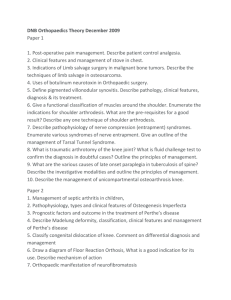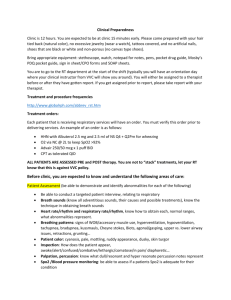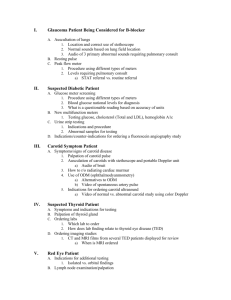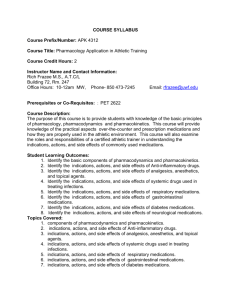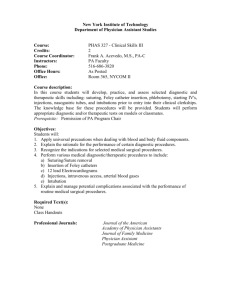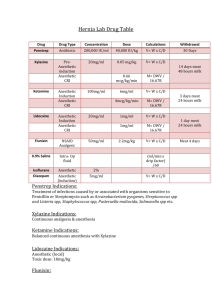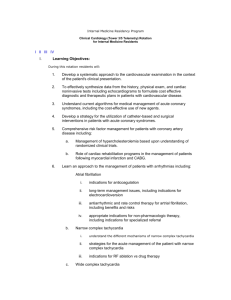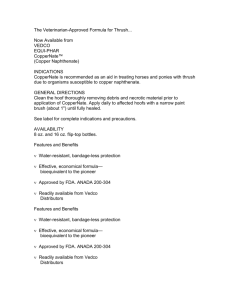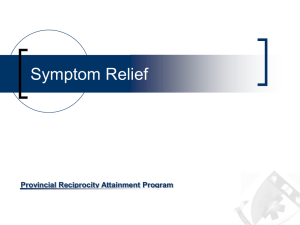Stress Test
advertisement
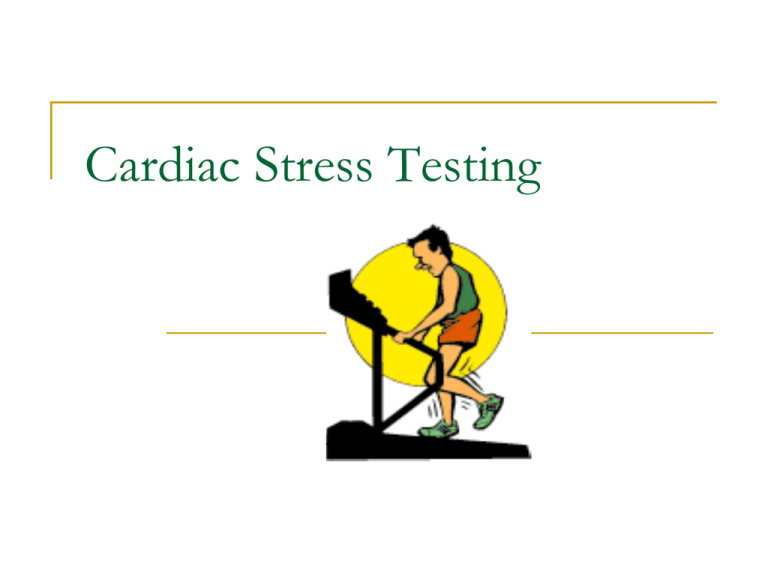
Cardiac Stress Testing What is a stress test? A progressive graded test that reproduces diagnostic, prognostic, and functional abnormalities in clients with cardiovascular and pulmonary disorders Evaluates electrocardiographic, hemodynamic, and symptomatic responses to exercise in a controlled environment Assesses exercise tolerance and can produce symptoms not present at rest Indications for Cardiac Stress Testing Diagnosis Indicated for those with symptoms of CAD Indicated for those with multiple risk factors Used in context with other clinical data Prognosis Evaluation of those with known or suspected CAD Predict long-term mortality based on ECG findings at rest, during exercise and in exercise recovery Indications for Stress Testing Post myocardial infarction May be done as early as four days post MI Prognostic assessment Activity prescription Functional capacity Exercise prescription Activity counselling Return to work Standardized Stress Testing Protocols Astrand Bruce – Protocol used with treadmill stress testing at TBRHSC Balke Ellestad Naughton Ramp – Protocol used with Cardiopulmonary stress testing at TBRHSC Regular Bruce Protocol Stress Test Stage Min MPH Grade 1 0:00 1.7 10% 2 3:00 2.5 12% 3 6:00 3.4 14% 4 9:00 4.2 16% 5 12:00 5.0 18% 6 15:00 5.5 20% Modified - Bruce Protocol Stress Test Stage Min MPH Grade 1 0:00 1.7 0% 2 3:00 1.7 0% 3 6:00 1.7 10% 4 9:00 2.5 12% 5 12:00 3.4 14% Regular Bruce Protocol Stress Test Client preparation No caffeine, tobacco, alcohol at least 24 hours prior to test May eat a light breakfast Wear loose comfortable clothing and footwear appropriate for walking on a treadmill Regular Bruce Protocol Stress Test Instruct client That they will be walking on a treadmill that will increase in speed and incline at regular intervals That electrodes be will be applied to the chest wall to monitor heart rate and the heart’s reaction to exercise A blood pressure cuff will be placed on the arm and blood pressure will be monitored at regular intervals Indications for terminating exercise testing Absolute indications: Moderate to severe angina Near syncope, dizziness, ataxia Cyanosis or pallor Sustained ventricular tachycardia Client’s desire to stop A >10mmHg systolic blood pressure drop from baseline when accompanied by other signs of ischemia ST elevation >1mm without diagnostic Q waves Indications for terminating exercise testing Relative Indications >10mmHg systolic blood pressure drop from baseline without other indications of ischemia >2mm downsloping or horizontal ST depression or marked axis shift Arrhythmias other than sustained VT such as bradyarrhythmias, heart block, supraventricular tachycardia, multifocal VPB’s or triplets of VPB’s Wheezing, leg cramps, SOB, fatigue increasing chest pain Hypertension >250mmHg systolic, >115mmHg diastolic Negative test Heart rate increases linearly with exercise Systolic blood pressure increases with exercise Diastolic blood pressure stays the same or increases or decreases by about 10mmHg No symptoms of chest discomfort are produced No horizontal or downsloping ST depression Test result could be false-negative if the plaque is an atheromata (inside the wall) or if the plaque that is protruding into the lumen is less than 75% Positive stress test Horizontal or downsloping ST depression >1mm (indicative of ischemia) Limiting symptoms of chest discomfort are produced A false-positive stress test could be the result of a serum electrolyte imbalance, left ventricular hypertrophy, medications such as digoxin, mitral valve prolapse Cardiopulmonary Stress Testing Indications for CPX Diagnose pulmonary disease Test modality – cycle ergometry Expired gasses are directly measured Ramp protocol – speed and resistance increased at one minute intervals Same preparation as for regular stress testing
